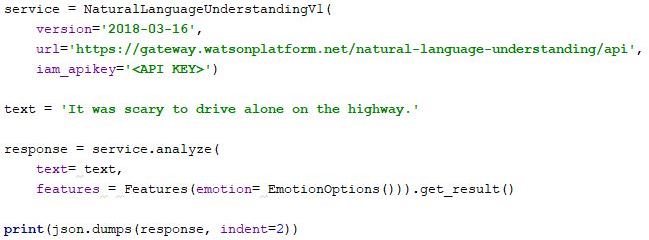Programming

I am a great fan of Opusmodus software. I have written many articles about it in the past. Owing to my several other commitments, I am not able to spend much time on it these days, but I keep checking the features in new releases regularly. The software has evolved substantially since its first release a […]
Title: C++ Concurrency in Action Author: Anthony Williams Publisher: Manning Publications Co. Year: 2019 (Second Edition) The first edition of this book came out in the year 2012 and covered the concurrency features of C++ 11. Much has happened since then. The present C++17 is significantly richer in terms of concurrency support, especially in […]

Last week, I showed how we can use IBM Natural Language Understanding API to identify emotions from given text. Today, I would like to run through the same examples, but using ParallelDots API service. There are wrappers in Java, Python, Ruby, C#, and PHP for accessing the REST service. However, I chose to write my own […]

Identifying the predominant sentiment in unstructured text is used widely these days. There are several REST API services that allow you to submit a piece of text and get back the corresponding sentiment analysis. Meaningcloud, Aylien, Google’s Cloud Natural Language API, and IBM Natural Language Understanding Service are just a few. Emotion detection, especially from facial […]

In the last article, I showed how we can use the neuralcoref library along with spaCy to do coreference resolution (examples involved anaphoric references). In today’s article, I want to try the same (well, almost) examples in Stanford CoreNLP engine and see how they compare. Since CoreNLP is a Java implementation, I chose to write the test […]

According to Stanford NLP Group, “Coreference resolution is the task of finding all expressions that refer to the same entity in a text”. You can also read this Wikipedia page. For example, in the sentence “Tom dropped the glass jar by accident and broke it”, what does “it” refer to? I am sure you will […]

In an earlier article, I wrote about using iLangGen to generate natural language text. iLangGen is a powerful text generation library that I have been working on over the years. Today, I would like to show how we can use that library to generate “poetry“. Be warned, however, that the generated poem is devoid of […]

In the earlier two articles, we looked at Sentence Parsing and Chunking as supported in OpenNLP. In today’s article, let us explore Named Entity Recognition, also known as NER. NER is a technique to identify special categories of noun phrases such as people, places, companies, money, etc., present in the given text. This is widely used as […]

In my previous post, I showed how to parse sentences using OpenNLP. Another useful feature supported by OpenNLP is “chunking”. That is the subject of today’s article. Chunking stands between part-of-speech tagging and full parse in terms of the information it captures. POS tagging assigns part of speech to individual tokens in a sentence. So, […]

In my earlier posts I have written about parsing text using spaCy and MeaningCloud’s parsing API. For today’s article, I decided to take a look at OpenNLP, an open-source ML-based Java toolkit for parsing natural language text. OpenNLP is a fairly mature library and has been around since 2004 (source: Wikipedia). It is actively maintained and […]
Recent Comments